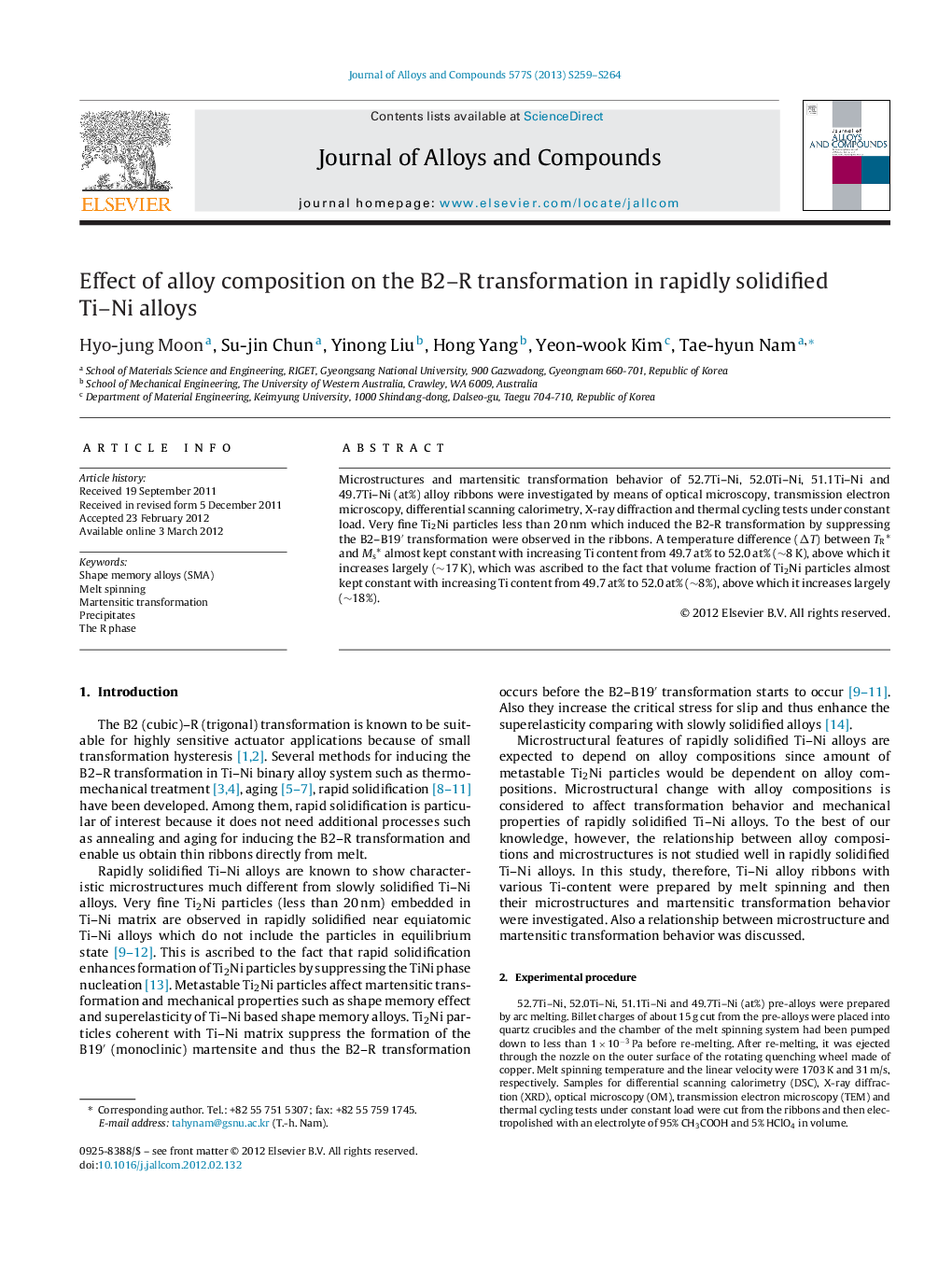| Article ID | Journal | Published Year | Pages | File Type |
|---|---|---|---|---|
| 1613801 | Journal of Alloys and Compounds | 2013 | 6 Pages |
Microstructures and martensitic transformation behavior of 52.7Ti–Ni, 52.0Ti–Ni, 51.1Ti–Ni and 49.7Ti–Ni (at%) alloy ribbons were investigated by means of optical microscopy, transmission electron microscopy, differential scanning calorimetry, X-ray diffraction and thermal cycling tests under constant load. Very fine Ti2Ni particles less than 20 nm which induced the B2-R transformation by suppressing the B2–B19′ transformation were observed in the ribbons. A temperature difference (ΔT) between TR* and Ms* almost kept constant with increasing Ti content from 49.7 at% to 52.0 at% (∼8 K), above which it increases largely (∼17 K), which was ascribed to the fact that volume fraction of Ti2Ni particles almost kept constant with increasing Ti content from 49.7 at% to 52.0 at% (∼8%), above which it increases largely (∼18%).
► Very fine Ti2Ni particles less than 20 nm were observed and volume fraction of Ti2Ni particles almost kept constant (∼8%) with increasing Ti content from 49.7 at% to 52.0 at%, above which it increased largely (∼18%). ► Ti2Ni particles played an important role for inducing the B2-R transformation. ► We also fund that a temperature difference (ΔT) between TR* and Ms* almost kept constant with increasing Ti content from 49.7 at% to 52.0 at% (∼8 K), above which it increased largely (∼17 K).
